It's genetics at work, and it's what sometimes brings us the cool and different varieties of familiar plants. Some of that is selective breeding, but sometimes plants grown from seed just have unique qualities: different colors, shorter or taller, faster-growing. I have evidence of this now in my own garden with my Japanese maple seedlings.
My biggest and oldest Japanese maple (Acer palmatum 'Fireglow') has been producing lots of seeds for the last three or four years, and several of those germinate each year. I carefully dig up the seedlings and pot them up, then nurture them for a couple of years.
Although my two specimens from two years ago both inexplicably died over the winter, I have six surviving saplings from last year, and they illustrate how different a child can be from its parents and siblings.
Here's the parent tree up close:
The leaves start out a nice, dark red...
...but then fade to green as the summer progresses:
Part of the reason that it fades to green is that it gets a lot of sun -- that has an effect on greening up, doesn't it?
Let's compare the saplings now. The first three are quite similar to the parent...
 |
| number one |
...with leaves starting red and fading to green. Number two looks a bit different from number one, especially in the way that the green spreads...
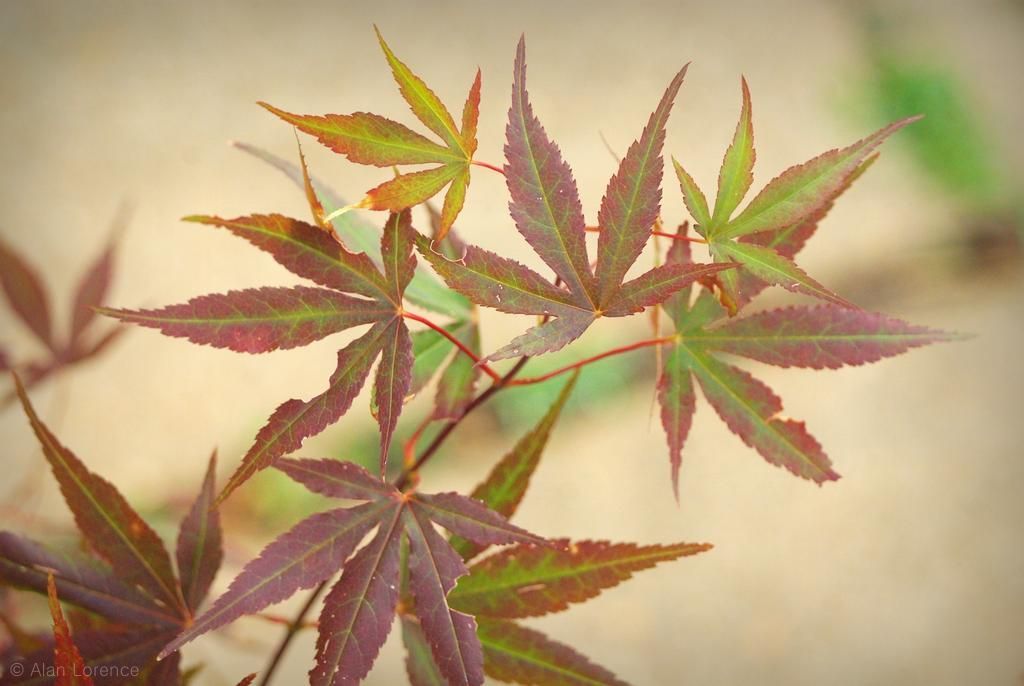 |
| number two |
...but maybe that's nutrition or sunlight exposure. Number three is the reddest of the bunch:
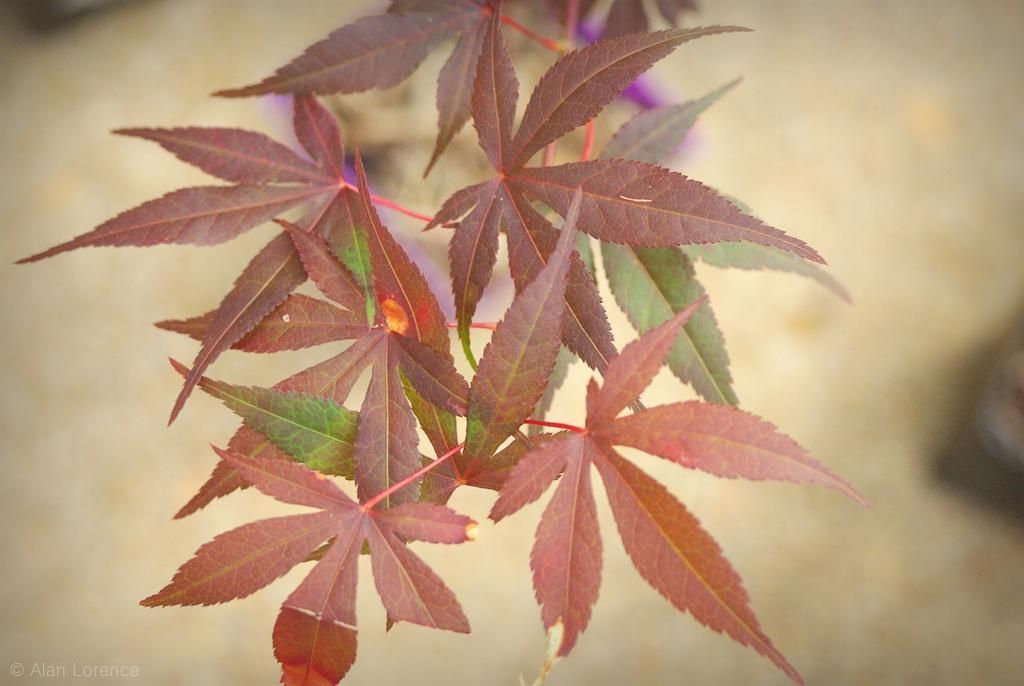 |
| number three |
It's starting to green up a bit though.
Number four is more green than red, and is the largest of the family:
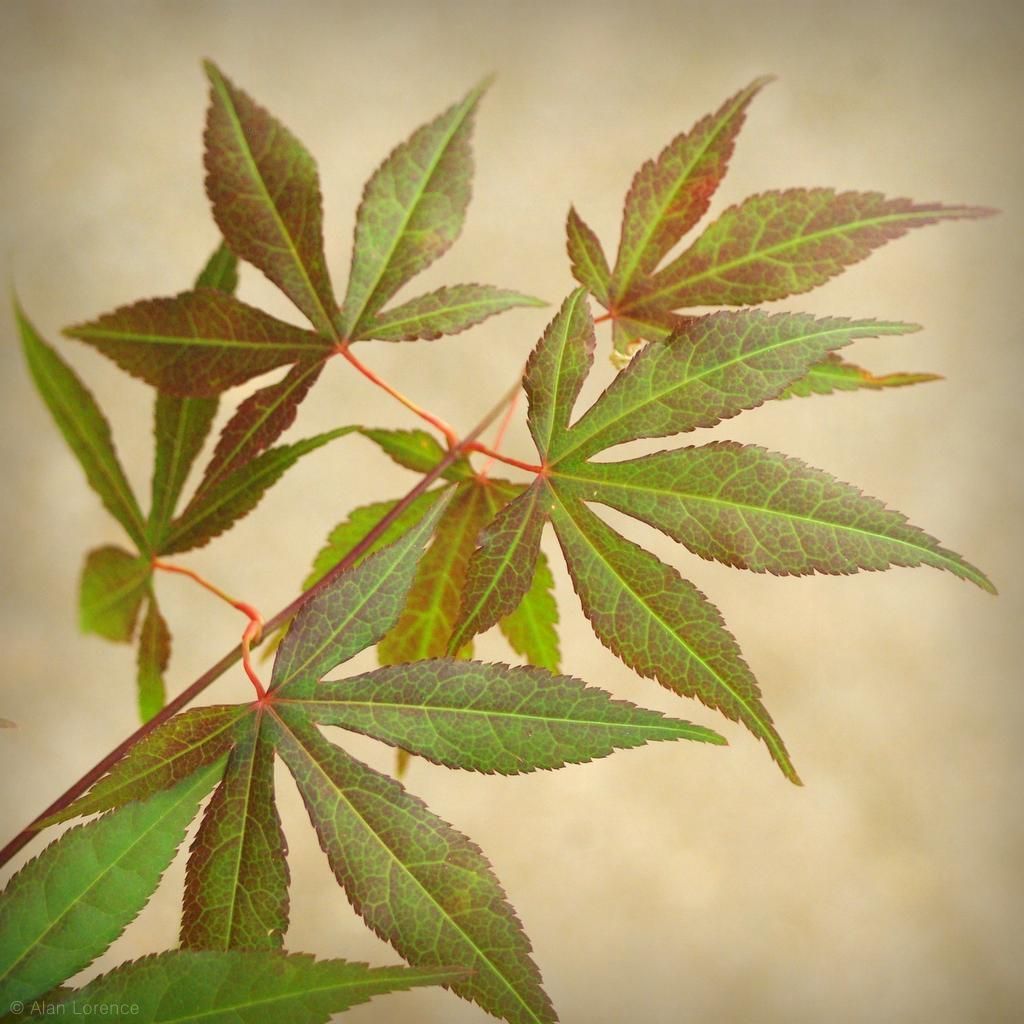 |
| number four |
Now things get really interesting. Notice anything different about number five?
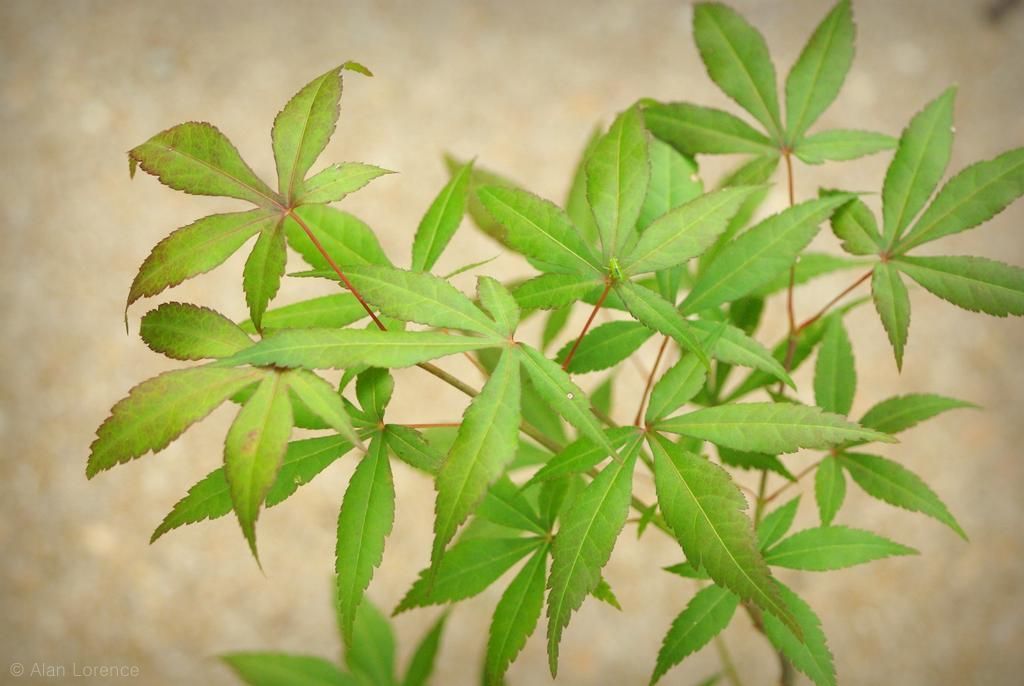 |
| number five |
Yep, it has a katydid nymph on it's leaf!
No, that's not it. It's green! No red at all!
You think that's interesting, take a look at number six:
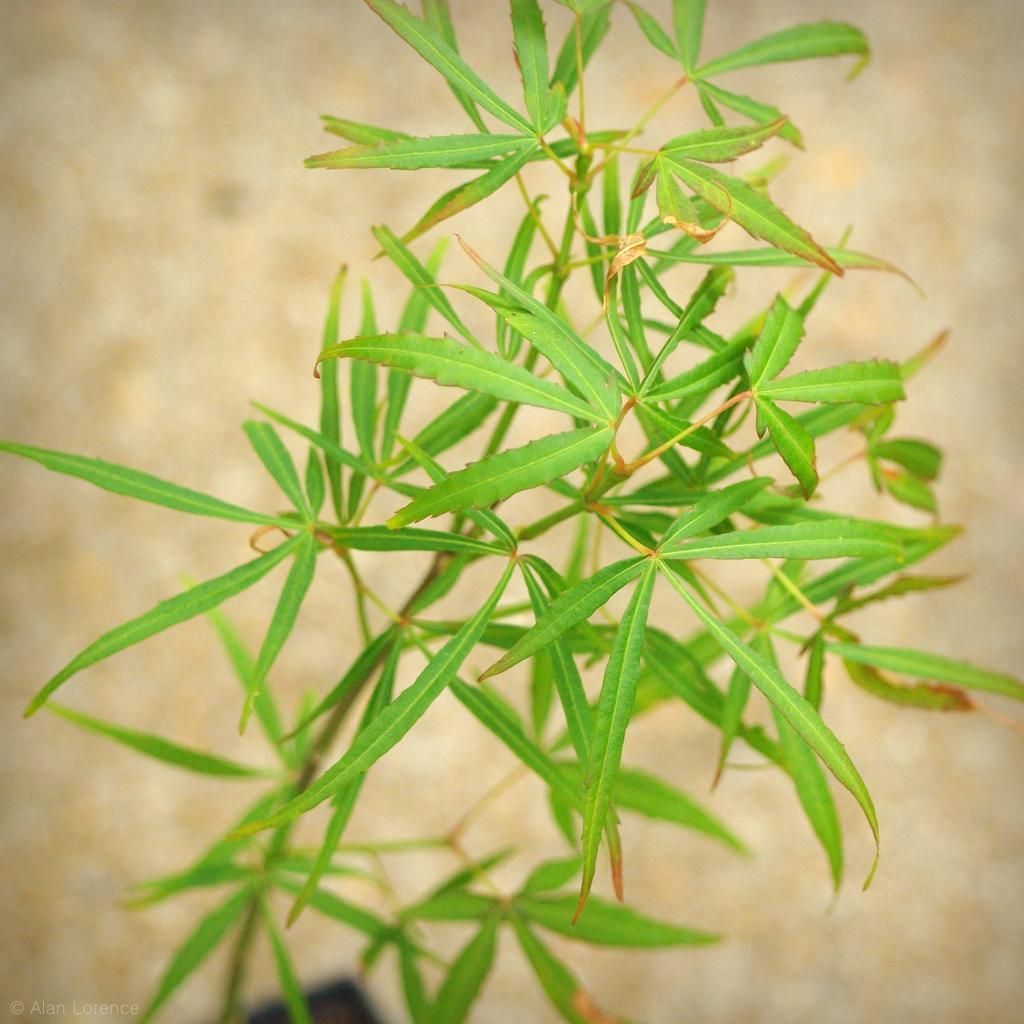 |
| number six |
Green but much more delicate leaf structure. It's also the shortest of the group, but that could be because its leader got damaged and it now has two (I need to fix that).
Here's the whole group:
Interesting stuff, right?
I'm really eager to see how these mature -- will they look more similar over time?
I only noticed this now because I gathered all of my dozens and dozens of loose potted plants when cleaning up for the tour. The plants were partially obscured by dicentra and fern foliage so their differences were not that obvious.
.

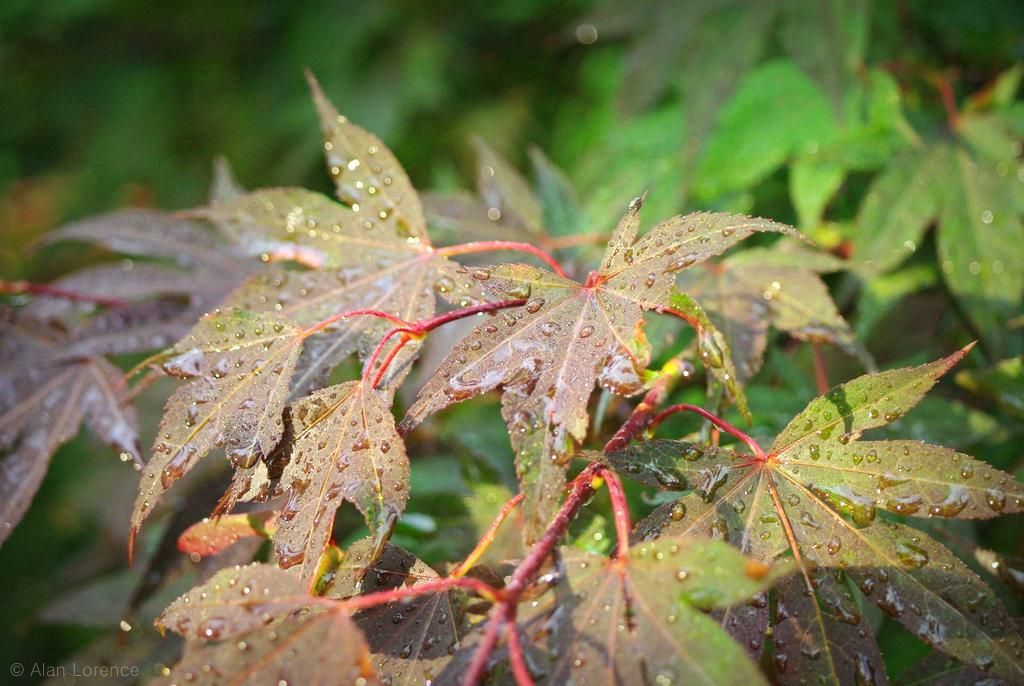
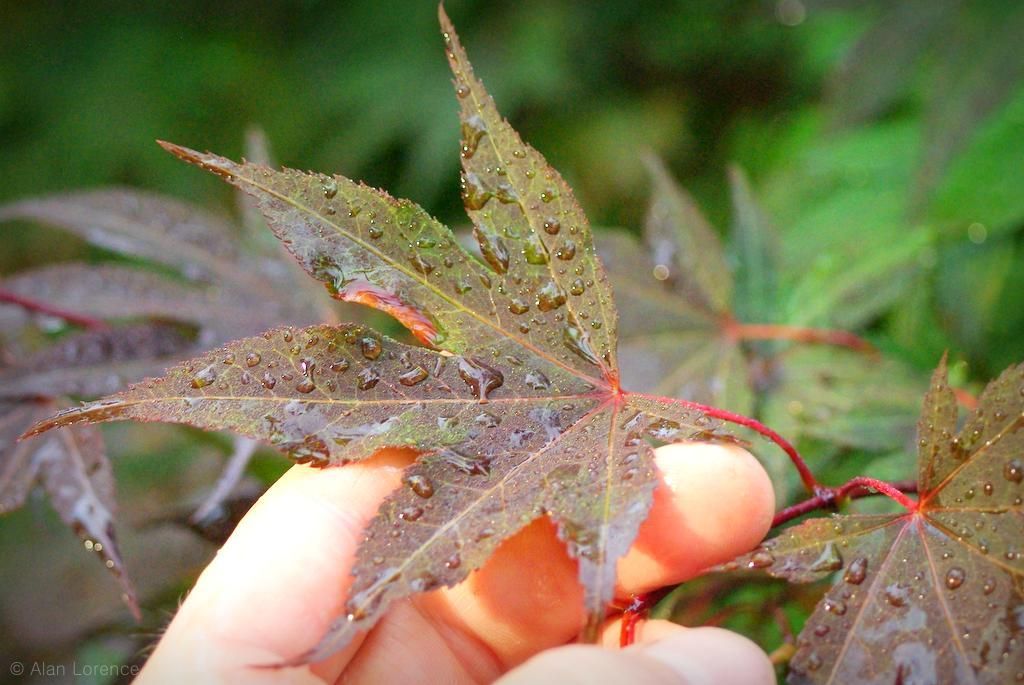
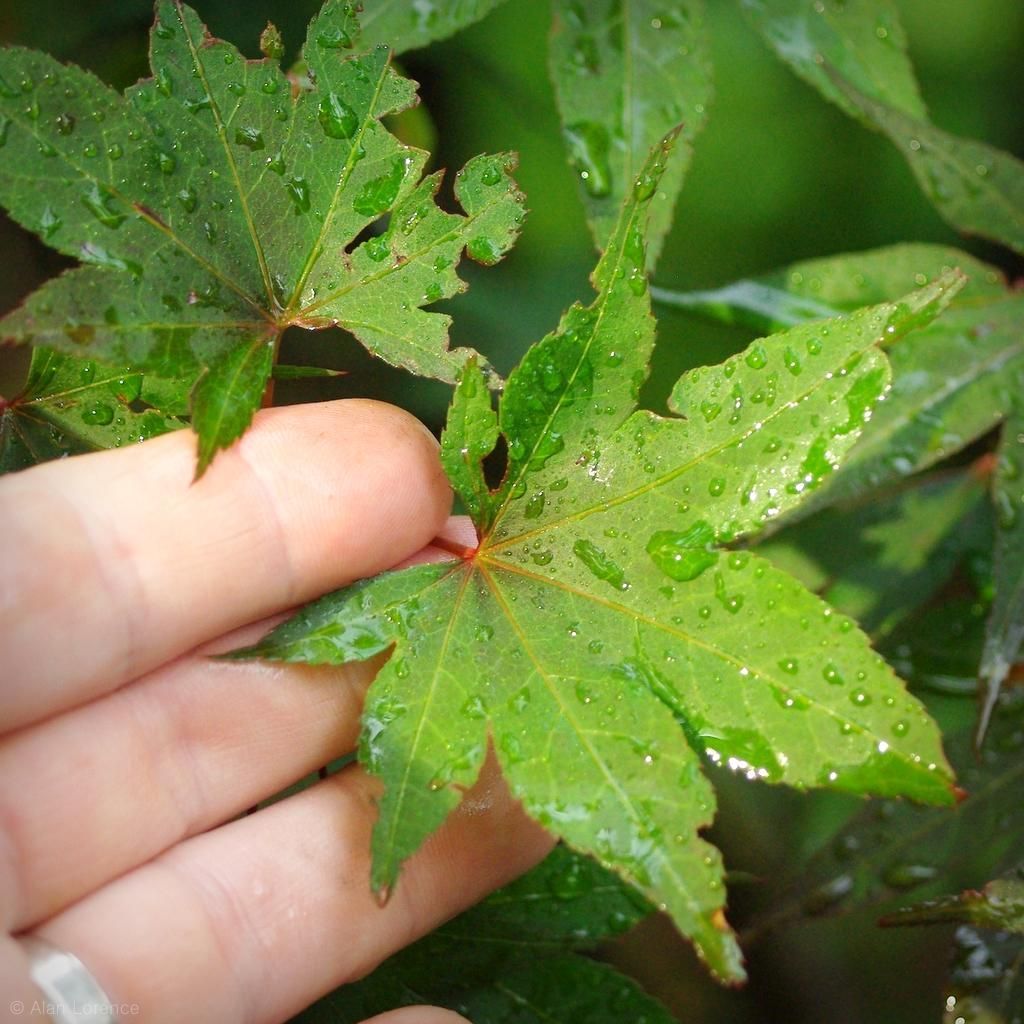
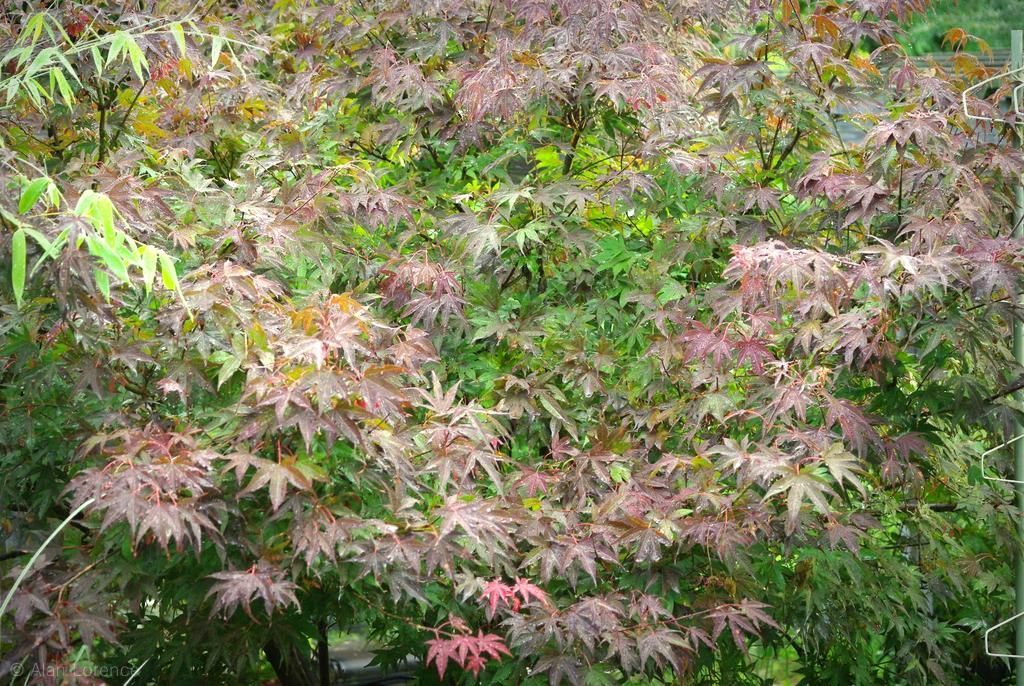


Plants are the most interesting people! How cool is it that the kids vary so much. At this rate you'll have a Japanese maple forest before you know it!
ReplyDeleteSo cool that you have the lot grown from seed Alan! Have yet to see them germinate here despite our acers producing seeds each year. It'll be interesting to see how five and six will turn out to be. Once bigger they can be propped perhaps by grafting?
ReplyDeleteThey look different. I bet nurseries would sell the red ones as named cultivars.
ReplyDeleteVery cool Alan!
ReplyDeleteGerhard is right ... and he might actually be right about your Fireglow.
My Fireglow holds red leaves in strong late afternoon sun in the southeast. Check to see if your tree has a graft union. If not, it's probably just a red seedling that should've been sold as Acer palmatum Atropurpureum. If it does have a graft union, perhaps the cutting that was grafted didn't truly come from a Fireglow. The last seedling is quite unusual showing the "strapleaf," which falls into the linearilobum category of Japanese maples. Seedlings should be observed for many years before expecting stability of leaf characteristics. There are WAY too many cultivars out there that are WAY too similar to already named plants.
Still super neat!
Enjoy them!
Best, -Jeremy